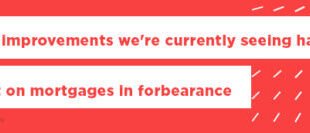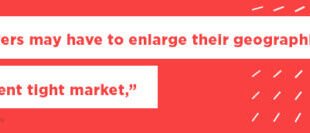
The fallout from the COVID-19 pandemic continues to be the main driver behind the American economy. Another 1.48 million Americans filed initial unemployment claims over the last week, according to the Labor Department. Dow Futures sank on the news but gained back a little ground due to continuing jobless claims — that’s unemployment claims filed for two weeks in a row or more – dropping by more than 700,000.
But two major developments regarding the banking industry sent Wall Street on a 24-hour rollercoaster ride.
Bank stocks rallied across the board on Thursday morning after United States regulators announced they would make it easier for banks to invest in some riskier avenues, such as venture capital funds. Banks also no longer have to build up significant cash safeguards against certain derivative trades.
That same day, the Federal Reserve released its annual stress test, and it wasn’t good news for banks. The Fed decided to place harsher restrictions on banks after the test showed many banks could come dangerously close to minimal capital scenarios. Beyond that, for Q3 the Board is “requiring large banks to preserve capital by suspending share repurchases, capping dividend payments, and allowing dividends according to a formula based on recent income. The Board is also requiring banks to re-evaluate their longer-term capital plans.” Also, for the first time, banks are going to have to resubmit their payout plans at the end of the year.
After the announcement, bank shares — which had surged early in the day — sank back with Wells Fargo back 3.3% and Goldman Sachs dropping 3.9%. Futures were flat following the release of the Fed’s stress test. Early Friday the 10-year Treasury note yield was trading around 0.671%
Purchases continue their rally, but what about Forbearances?
This week we got two different reports on the total number of forbearances for existing mortgage loans. On Monday, the Mortgage Bankers Association’s report showed the percentage of loans in forbearance dip from 8.55% to 8.48% last week. That would be the first time since March we saw the number of home loans in forbearance go down.
According to the MBA, loans backed by Ginnie Mae (FHA, USDA, VA) are still the highest share of loans in forbearance with more than 11%. It should be noted that before the COVID-19 pandemic, just 0.25% of home loans were in forbearance.
Friday morning, mortgage data and technology firm Black Knight released its report showing that forbearances had actually gone up. The group’s report showed the total number of active loans in forbearance moving from 8.7% up to 8.8%. Both reports show loans from Ginnie Mae have the highest percentage of forbearance rates.
Another bit of data that might seem confusing is the latest report on existing home sales. The National Association of Realtors shows that sales were down 9.7% in May compared to April, and down more than 26% year-over-year. However, you have to keep in mind that the data deals with closed sales in May that had contracts signed in April or March. Those two months bore the brunt of the pandemic. That’s why the NAR believes this specific set doesn’t tell the full story, and that the numbers in June will much better reflect the upward trajectory.
“Well into the month of June, I think people are much more relaxed, knowing that there is a massive stimulus package in the economy,” said Lawrence Yun, chief economist for the NAR. “I am very confident that this will be the cyclical low point. Buyers are coming back and listings are coming back.”
If you are considering buying or refinancing, you should absolutely call a Movement Mortgage loan officer. This week’s Freddie Mac 30-year fixed-rate mortgage average came in flat at 3.13% — the lowest average in the history of Freddie Mac’s reporting going back to 1971.



